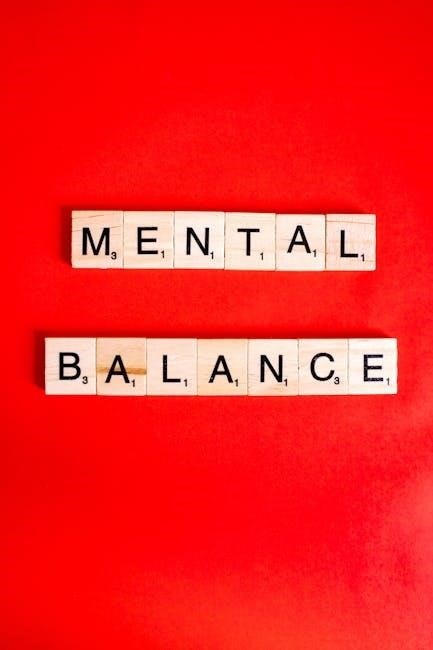Vocabulary graphic organizers are visual tools that help students organize and connect new words, enhancing understanding and retention through structured, interactive learning experiences․

Definition and Purpose of Vocabulary Graphic Organizers
Vocabulary graphic organizers are visual tools designed to help students structure and connect information about new words․ They provide a framework for organizing definitions, synonyms, antonyms, and contextual uses, making abstract concepts more concrete․ These organizers are intended to enhance vocabulary acquisition by linking new words to prior knowledge and promoting deeper understanding․ They are particularly useful for visual and kinesthetic learners, as they transform complex linguistic concepts into manageable, interactive diagrams; By fostering active learning, graphic organizers enable students to engage critically with vocabulary, improving retention and application․ Their purpose is to simplify the learning process, making it more engaging and effective for diverse learners․ They are versatile and can be adapted to various subjects and learning objectives, ensuring comprehensive vocabulary development․
Importance of Visual Learning in Vocabulary Development
Visual learning plays a crucial role in vocabulary development by providing students with a structured and engaging way to process information․ Graphic organizers, such as KWL charts and concept maps, allow learners to visually connect new words to their meanings, contexts, and relationships․ This approach enhances memory retention by transforming abstract concepts into tangible, interactive diagrams․ Visual tools also cater to diverse learning styles, particularly benefiting visual and kinesthetic learners․ By organizing vocabulary in a clear and accessible format, graphic organizers simplify complex linguistic ideas, making them easier to understand and apply․ This method fosters active engagement, critical thinking, and deeper comprehension, ultimately improving reading and academic performance․ The visual structure helps students build connections between words, fostering a more holistic understanding of language․

Types of Vocabulary Graphic Organizers

Common types include KWL charts, concept maps, Venn diagrams, and word maps, each designed to visually structure vocabulary learning and exploration for better comprehension․
KWL Charts for Vocabulary Exploration
KWL charts are a popular graphic organizer divided into three columns: Know, Want to Know, and Learned․ This tool is particularly effective for vocabulary exploration in informational texts․ Students begin by listing what they already know about a topic or vocabulary word in the first column․ The middle column is for questions or concepts they want to learn, fostering curiosity and guiding instruction․ After reading or discussion, the third column is used to record what they have learned, reinforcing new knowledge and connecting it to prior understanding․ KWL charts are versatile, allowing teachers to assess background knowledge, track progress, and encourage active engagement with vocabulary․ They are especially useful in literature and content-area studies, making complex words more accessible and engaging for learners of all ages․
Concept Maps for Word Relationships
Concept maps are visual tools that illustrate relationships between words, ideas, or concepts․ They are ideal for exploring vocabulary by creating a web of connections․ Starting with a central word or concept, students branch out to related terms, synonyms, antonyms, definitions, and examples․ This organizer helps learners visualize how words are interconnected, enhancing understanding and retention․ By structuring knowledge hierarchically, concept maps promote deeper thinking about word meanings and contexts․ They are particularly useful for identifying patterns, such as word families or thematic vocabulary․ Teachers can use concept maps to introduce new terms, while students can apply them to organize study materials or prepare for assessments․ This tool fosters a holistic approach to vocabulary learning, making abstract relationships tangible and memorable for learners․
Venn Diagrams for Comparing Vocabulary
Venn diagrams are circular charts that overlap to show relationships and differences between vocabulary words․ They are effective for comparing and contrasting terms, helping students identify similarities and distinctions․ For example, two overlapping circles can represent synonyms, with shared traits in the overlap and unique features outside․ This visual tool enhances understanding by making abstract relationships concrete․ Teachers can use Venn diagrams to teach word pairs, such as antonyms or related concepts, while students can apply them to differentiate nuances in word meanings․ By visually organizing information, Venn diagrams improve comprehension and retention, making them a valuable asset for vocabulary instruction and comparative analysis․ They are especially useful for visual learners who benefit from structured, interactive lessons․
Word Maps for In-Depth Word Analysis

Word maps are detailed graphic organizers designed to explore and analyze vocabulary words extensively․ They typically feature the word in the center, with branches extending outward to categories like definitions, synonyms, antonyms, examples, and associations․ This structure helps students build a comprehensive understanding of word meanings and usage․ Word maps encourage critical thinking by connecting new words to prior knowledge, making learning interactive and engaging․ They are particularly useful for differentiated instruction, allowing teachers to tailor activities to various learning needs․ By visually organizing information, word maps enhance vocabulary retention and promote deeper comprehension of complex terms․ They are versatile tools that can be adapted to suit different age groups and subjects, making them invaluable for effective vocabulary instruction․
How to Use Vocabulary Graphic Organizers in Teaching and Learning
Integrate graphic organizers into lesson plans by introducing tools like concept maps and Venn diagrams․ Model their use, then guide students in collaborative and independent activities․
Step-by-Step Guide for Teachers
To effectively use vocabulary graphic organizers, start by selecting the appropriate template based on learning objectives․ Introduce the tool with a clear demonstration, explaining its purpose and structure․ Provide examples of completed organizers to guide students․ Encourage collaborative use in small groups before transitioning to independent practice․ Regularly review and discuss student work to reinforce understanding․ Differentiate by offering simplified or advanced versions for varied skill levels․ Incorporate feedback loops to help students refine their work․ Finally, integrate graphic organizers into formative assessments to track progress․ Consistent practice and creative application will maximize their impact on vocabulary development․ Many templates are available as downloadable PDFs for easy classroom implementation․
Strategies for Student-Centered Learning
Foster active engagement by allowing students to create and customize their own vocabulary graphic organizers․ Encourage self-directed learning by providing templates in PDF formats that cater to different learning styles․ Promote collaboration by pairing students to share and discuss their organizers, fostering peer-to-peer learning․ Incorporate technology by using digital tools for interactive organizer creation․ Offer choices, such as selecting words or themes, to increase ownership of learning․ Regularly incorporate feedback sessions where students reflect on their progress․ Encourage students to use organizers as study tools for independent practice․ By emphasizing autonomy and creativity, graphic organizers become a powerful student-centered resource․ Downloadable PDF templates make it easy to adapt activities to individual needs and preferences․

Benefits of Using Vocabulary Graphic Organizers
Vocabulary graphic organizers enhance learning by helping students retain words, understand meanings, and make connections․ They provide a clear, structured way to organize and visualize information effectively․
Enhancing Reading Comprehension
Vocabulary graphic organizers are powerful tools for improving reading comprehension by helping students connect new words to prior knowledge․ They enable learners to visually map relationships between words, concepts, and contexts, fostering deeper understanding․ By organizing vocabulary in a structured format, students can better identify main ideas, themes, and supporting details in texts․ This visual approach also aids in recognizing synonyms, antonyms, and connotations, which are critical for interpreting complex sentences․ Additionally, graphic organizers encourage active engagement with material, promoting critical thinking and reflection․ For instance, Venn diagrams can compare characters or ideas, while word maps can unpack word meanings․ Such strategies make reading comprehension more accessible and meaningful for diverse learners, enhancing their ability to analyze and interpret texts effectively․ Regular use of these tools leads to improved reading fluency and overall academic performance․
Improving Critical Thinking Skills
Vocabulary graphic organizers play a significant role in enhancing critical thinking skills by providing structured frameworks for analyzing and connecting information․ These tools encourage students to actively engage with vocabulary, fostering deeper comprehension and the ability to evaluate relationships between words and concepts․ By mapping out connections, students develop the capacity to question and understand why certain words are linked, promoting analytical thinking․ Graphic organizers like Venn diagrams and concept maps facilitate comparison and contrast, essential skills for critical thinking․ They also reveal patterns and hierarchies, helping students synthesize information and identify broader concepts․ This structured approach enhances retention and understanding, translating to improved critical thinking abilities across various learning situations․ Regular use of these tools equips students with essential skills for analyzing and evaluating information effectively․
Supporting Diverse Learners
Vocabulary graphic organizers are invaluable for supporting diverse learners, as they cater to various learning styles and abilities․ These tools provide visual, kinesthetic, and auditory learners with structured frameworks to engage with vocabulary effectively․ For students with learning difficulties, such as dyslexia, graphic organizers simplify complex information, making it easier to process and retain․ They also assist English language learners by visually connecting new words to prior knowledge, enhancing understanding․ Additionally, these organizers accommodate different learning paces, allowing teachers to implement differentiated instruction․ By tailoring graphic organizers to individual needs, educators ensure that all students, regardless of their learning style or ability, can access and benefit from vocabulary instruction․ This inclusivity fosters a more equitable learning environment․
How to Create Effective Vocabulary Graphic Organizers

Design clear, visually appealing templates that align with learning objectives․ Ensure they are adaptable to different subjects and learner needs, using images and color coding for better comprehension and retention․
Design Principles for Clarity and Functionality
When creating vocabulary graphic organizers, prioritize simplicity and purpose․ Use clean layouts with clear sections to avoid overwhelming students․ Incorporate visual cues like colors, icons, and images to enhance understanding․ Ensure the design is adaptable to various vocabulary levels and subjects․ Organize information hierarchically, with key terms and definitions prominently displayed․ Allow space for students to add examples, synonyms, or illustrations, fostering engagement․ Use consistent formatting and alignment for readability․ Ensure the organizer is scalable for digital or print use․ By balancing aesthetics and functionality, educators can create tools that cater to diverse learning styles and needs, making vocabulary acquisition more accessible and effective for all students․
Applying Vocabulary Graphic Organizers in Different Subjects
Vocabulary graphic organizers are versatile tools applicable across various subjects, enhancing learning in Literature, Science, Social Studies, and more by aiding vocabulary acquisition and concept connection․
Integrating with Literature and Informational Text
Graphic organizers are invaluable for connecting vocabulary to literary and informational texts․ In literature, they help students analyze characters, themes, and plot development while building word knowledge․ For example, a concept map can visually represent relationships between characters and key vocabulary․ In informational texts, graphic organizers like Venn diagrams or word maps can clarify complex concepts and differentiate between similar terms․ This integration enhances comprehension and vocabulary acquisition, making texts more accessible․ Teachers can use these tools to guide students in identifying and understanding context clues, connotations, and nuanced meanings․ By linking vocabulary to content, graphic organizers foster deeper engagement with the material and improve overall literacy skills․ They are particularly effective for scaffolding learning in diverse classrooms․
Using in Science and Social Studies
Graphic organizers are highly effective in science and social studies to help students grasp complex vocabulary and concepts․ In science, tools like concept maps can illustrate relationships between scientific terms, such as ecosystems or cellular processes․ Word maps can break down technical vocabulary, like “photosynthesis,” into manageable parts․ In social studies, graphic organizers like timelines or cause-effect diagrams can help students connect historical events to key vocabulary․ These tools enhance understanding by visually organizing information, making abstract concepts more concrete․ They also support critical thinking and study skills, enabling students to retain and apply knowledge effectively across subjects․ This cross-curricular application makes graphic organizers indispensable for integrating vocabulary learning with content-area instruction․
Enhancing Creative Writing with Graphic Organizers
Graphic organizers are powerful tools for enhancing creative writing by helping students structure their ideas and expand vocabulary․ For instance, mind maps can help brainstorm story ideas, while concept maps can explore character relationships or plot sequences․ Word maps can deepen the understanding of descriptive words, enabling students to craft vivid imagery․ These tools encourage writers to organize their thoughts visually, fostering creativity and coherence․ By using graphic organizers, students can plan and revise their writing more effectively, leading to more engaging and polished compositions․ This approach not only enhances writing skills but also reinforces vocabulary acquisition, making it a valuable resource for teachers and students alike․

Examples and Templates of Vocabulary Graphic Organizers
Explore various vocabulary graphic organizer templates, such as word maps, Venn diagrams, and KWL charts, available in PDF formats for easy download and classroom use․

Free PDF Resources for Educators
Educators can access a variety of free PDF resources for vocabulary graphic organizers online․ Websites like Teachers Pay Teachers and Education․com offer downloadable templates for word maps, Venn diagrams, and KWL charts․ These tools are customizable to suit different grade levels and subjects․ For instance, word maps help students explore word meanings and relationships, while Venn diagrams enable comparisons between vocabulary terms․ Additionally, many educational blogs and platforms provide printable organizers designed for specific lessons or themes․ These resources are ideal for creating engaging and interactive vocabulary lessons, saving teachers time and effort in developing materials from scratch․

Challenges and Solutions in Implementing Graphic Organizers
Teachers may face challenges like student reluctance or lack of training․ Solutions include professional development, gradual implementation, and leveraging simple templates to ease adoption and engagement․
Addressing Common Difficulties in the Classroom
Teachers often encounter challenges when introducing vocabulary graphic organizers, such as student resistance to new methods or difficulty in connecting abstract concepts․ To address this, educators can provide clear, step-by-step guidance and demonstrate the practical benefits of these tools․ Encouraging collaboration among students can also foster engagement and reduce intimidation․ Additionally, incorporating interactive digital versions of graphic organizers can cater to diverse learning preferences․ For students struggling with visual organization, offering simplified templates or pairing them with peers who grasp the concept quickly can build confidence․ Regular feedback and encouragement help students stay motivated and see the value of these organizers in enhancing their vocabulary skills․
Vocabulary graphic organizers empower learners to visualize and connect words, enhancing comprehension and retention․ They are invaluable tools for fostering a deeper understanding of language and meaning․
Final Thoughts on the Effectiveness of Vocabulary Graphic Organizers
Vocabulary graphic organizers are powerful tools that enhance learning by transforming abstract concepts into visual, structured frameworks․ They foster deeper understanding, improve retention, and cater to diverse learning styles․ By enabling students to see relationships between words, these organizers promote critical thinking and effective communication․ Educators can adapt them to various subjects and learning levels, ensuring flexibility and inclusivity․ Their visual appeal simplifies complex vocabulary, making them especially beneficial for visual learners․ Regular use can significantly improve reading comprehension and academic performance․ As educators continue to seek innovative methods, vocabulary graphic organizers remain a valuable, versatile resource for engaging students and fostering linguistic mastery․ Their effectiveness lies in their ability to make learning both meaningful and accessible․

Leave a Reply